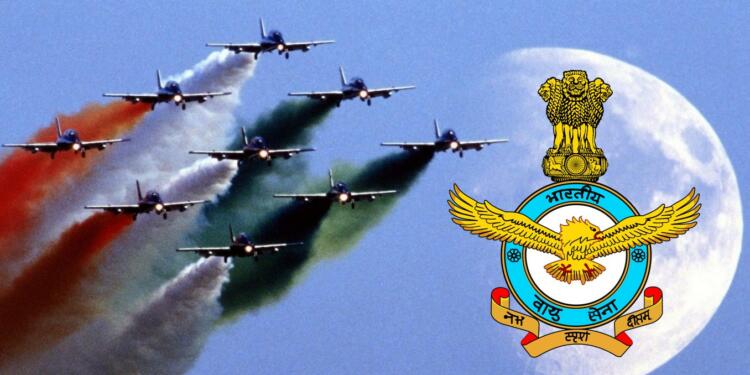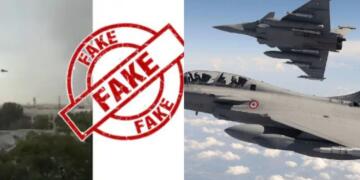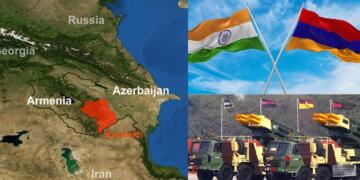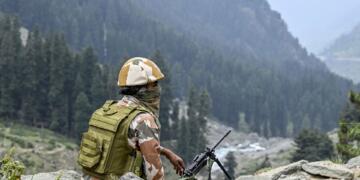India and China have been engaged in a border dispute along the Line of Actual Control (LAC) near Eastern Ladakh for the major part of last two years. While the Indian Army has thwarted the Chinese Liberation Army from making any advances, another bad news has come for the Chinese masters sitting in the Politburo offices of Beijing.
The World Directory of Modern Military Aircraft (WDMMA) recently published the Global Air Powers Ranking of 2022 where it has placed the Indian Air Force (IAF) above the People’s Liberation Army Air Force, also known as the Chinese Air Force. Despite boasting of a bigger size, the Chinese Air Force has been shown its place as it languishes on the seventh spot in the Global Air Powers rankings.
The Global Air Powers rankings are not solely based on the number of aircraft that a particular country’s Air Force possesses, but also on other factors such as modernization of the fleet, logistic support, defence and attack capabilities. WDMMA uses a formula which takes into account values related to the total fighting strength of the various air services of the nations.
Using the aforementioned metrics, a ‘TrueValueRating’ (TvR) is produced. Currently, the United States Air Force (USAF) is leading the TvR chart with a score of 242.9 while India sits on the sixth spot with a score of 69.4. Meanwhile, China is stuck on the lowly score of 63.8.
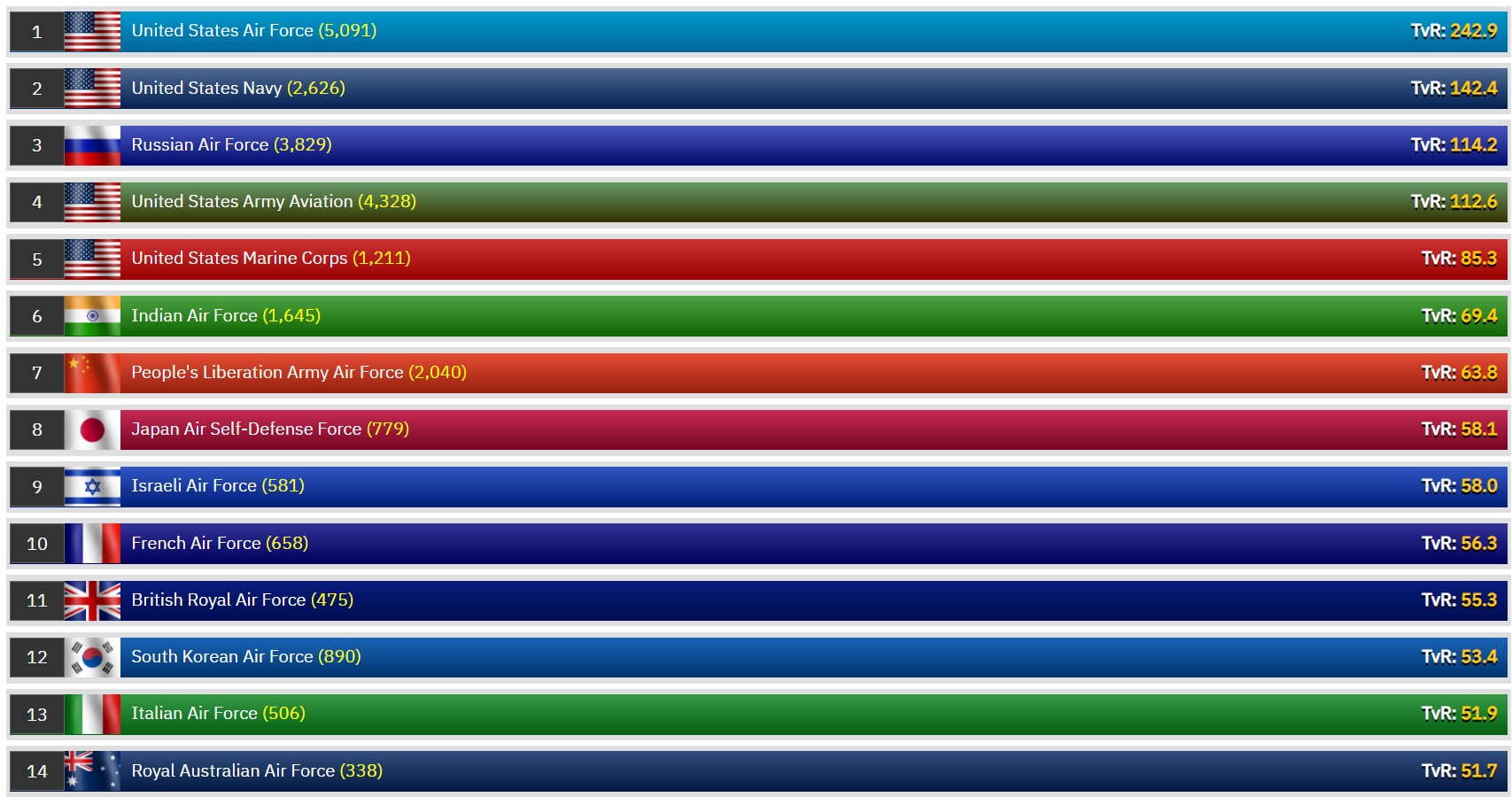
According to WDMMA, importance is mainly given to those categories which are normally overlooked by some powers, namely special-mission, dedicated bomber force, CAS, training and on-order units. It also focuses on local aero-industry capabilities, inventory balance (general mix of unit types) and force experience.
The comprehensive report tracking 98 countries, covering 124 air services and following a total of 47,840 aircraft describes in detail the current strengths and inherent weaknesses of modern military air services across the globe. It is also interesting to note that the Indian Air Force is above Japan Air Self-Defense Force (JASDF), Israeli Air Force and French Air and Space Force as well in the Global Air Powers rankings.
Poor, shoddily copied jets and weak personnel – a tale of Chinese Air Force
While China (2,040) may have pipped India (1,645) in the number of aircraft, it is the quality of both the fleet and the personnel operating it that has helped India gain ground in the Global Air Powers rankings.
India leapfrogging China in air force capabilities is also understandable as the majority of Chinese aircraft are reverse engineered from their American or other global counterparts. The J-10 was reputedly based on the Israeli IAI Lavi and by extension the United States’ General Dynamics F-16; the J-11 is a clone of the Russian Su-27; the JF-17 is a modern development of the Soviet MiG-21. The J-20 bears an uncanny resemblance to the F-22, and finally, the J-31 is widely believed to rely heavily on technology appropriated from the F-35 Joint Strike Fighter.
Although directly copying foreign models saves China the time doing R&D – the ploy eventually backfires as most of these jets cannot stay in service for an extended period of time, often breaking down and posing high-reliability issues.
Moreover, the Chinese Air Force is largely made of conscripts who do not choose the profession on their own, albeit are forced into it. They lack the natural courage to put their lives on the line and perhaps cannot go beyond the line of duty to do the impossible — say pulling off a Wing Cmdr. Captain Abhinandan.
Indian Air Force and its legendary tales
India’s prominence in the airspace is a stuff of the legends. After Pakistan based terror group, Jaish-e-Mohammed had launched a deadly terror attack in the Indian state of Jammu and Kashmir – the Indian Air Force in a retaliatory measure had destroyed a major terror camp in Balakot, Pakistan. According to intelligence reports, around 300 terrorists were killed in the operation.
Afterwards, Pakistan violated India’s airspace on February 27, 2019. However, Wing Cmdr Abhinandan, flying a vintage MiG-21 Bison dived deep into the enemy territory and shot down a far superior Pakistani F-16. Later, Abhinandan had to eject the cockpit after his MiG-21 Bison was shot down. He was taken captive by Pakistan but handed back three days later as New Delhi threatened to unleash hell if the IAF officer was not returned.
Read More: Wing Commander Abhinandan Varthaman to be awarded Vir Chakra for shooting down Pakistani F-16
The sanctioned limit of the Air Force’s squadron strength is 42. However, currently, only 30 squadrons are in operation. The Modi government is continuously attempting to modernise the fleet. After much political trouble, 35 of the 36 Rafales have reached India and will soon be inducted into the Indian Air Force. There is still a lot of ground to cover but given that India is fighting a two and a half front war, the report may come as a booster shot of confidence to the forces as well as the central government.


























